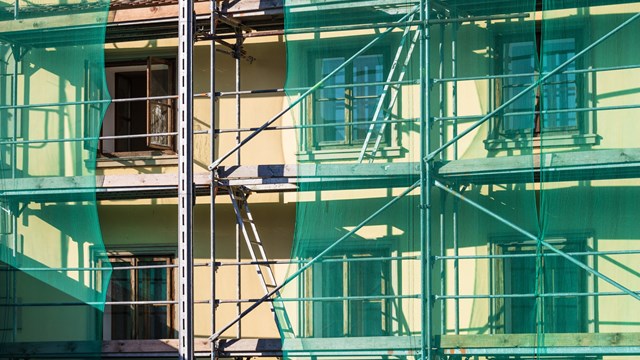
Cities reshape and reinvent themselves regularly and organically. Old buildings become obsolete for a variety of reasons, and new buildings replace them. Many a four- or five-story tenement has been knocked down to make way for a shiny, new glass condo tower - and more often than not, when a building gets razed to build something new in its place, there’s at least one building adjacent to the demolition and new construction site. What if you’re that building? What impact can the demo and subsequent construction have on your property, and what can you do to minimize disruption and possible damage?
Potential Effects of Construction Next Door
Major construction can cause or amplify a variety of potential problems for adjacent properties. The main areas of concern are vibration, cracking, movement, and new or changing load patterns. An adjacent property might experience none of those issues - or one, some, or all of them.
“Damage can come in many forms,” says Giulia Alimonti, senior architect with CTLGroup, a New York-based engineering and architectural firm with projects across the country and internationally, “including foundation cracking or settlement, building façade movement and cracking. Interior finishes such as drywall and plaster may crack as well. Common types of damage may include airborne debris or over-pressure waves. Ground vibrations may ‘shake’ adjacent structures and, if sufficiently severe, may cause damage and soil settlement.”
There are some precautionary moves that can be made to keep tabs on these potential problems, and head them off before they become serious. Field monitoring can evaluate ground-borne and structural vibrations, measuring their continuing effects during construction. Pre-construction surveys to catalog any existing cracks, followed up with vigilant dynamic monitoring of those cracks’ response to construction can head off worsening cracking problems. Potential movement, settlement and rotation of super- or sub-structural elements can also be monitored during this period and work altered or halted to correct any concerning developments. Lastly - though certainly no less important - adjacent construction activities can influence the size and distribution of loads on a neighboring structure. If an existing building allows the builders next door to use their roof as a staging area, for example, that roof structure must be carefully evaluated by engineers beforehand to assure that the added weight of supplies, equipment, and so forth does not pose a risk to the building or its occupants.
Getting Ahead of the Problem
“Risk mitigation affects virtually all construction sites in New York City,” says Alimonti. “Any time there is an existing building next to a construction project - they can be older, even landmarks, or new buildings, regardless of the age of existing property - there should be steps taken by both owners to minimize the effects of construction on existing structures.”
Alimonti continues: “Communication is key - there should be communication between all parties involved. The board of directors and manager of the existing building and the owner of the new building should start a conversation immediately to share documents about excavation and design. Engineers for the existing building can review the plans and engage in a conversation about what additional measures can be taken to monitor vibrations, provide structural support, etc.”
When Construction Gives You Lemons...
While no one wants to live with major construction next door for any extended period of time (and we all know how long it can take for a building to be completed), Alimonti suggests viewing it less as a huge drag and more as an opportunity. Demolition and excavation of the adjacent site will likely expose parts of your building that are normally not accessible or viewable. “An architect or structural engineer can do an assessment of existing conditions of your building while the foundation and exterior walls are exposed,” he says. “The assessment should include all sides of the building. There should be visual assessments, a walk through the building and stairwells, a survey of existing conditions, and any deficiencies should be addressed in a timely manner. Identify all potential hazards and existing conditions.”
Alimonti also suggests that surveys should be commissioned to determine if there are any potential groundwater issues that your building might not have been aware of, and steps taken to mitigate those problems now. Manhattan is notorious for underground streams and creeks that have been covered and diverted over the centuries as the city grows and develops. One such unknown water hazard might be sitting under yours.
Additionally, Almonti advises that “A proactive approach is always best for a positive outcome. Steps to be undertaken should include determining the extent and schedule of the work to be performed, and to advise the residents [about a project] beforehand, since they’re typically more disturbed when the noise or vibration from the adjacent work comes as a surprise, rather than them being forewarned about it.”
In the final analysis, the disruption of construction adjacent to your building can turn out to be a silver lining to a storm cloud. Use the opportunity. Communication is the key, mitigation is the goal. In the end, good neighborliness will pay off.









Leave a Comment